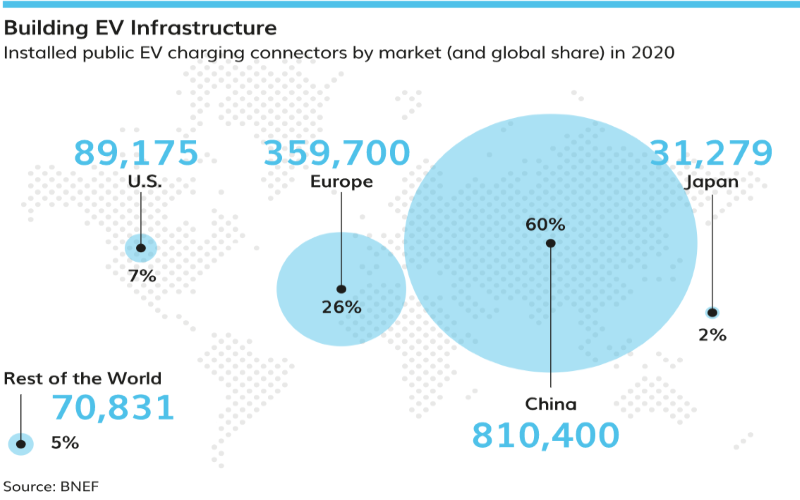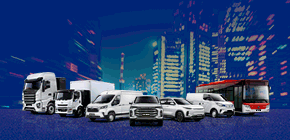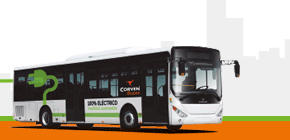Transportation accounts for 24% of total carbon emissions, of which road vehicles comprise 70%. Electric vehicles (EVs), accounted for just 4% of passenger car and 1% of commercial vehicle sales worldwide last year, according to the BloombergNEF (BNEF) Electric Vehicle Outlook 2021.
However, momentum is building exponentially. In 2011, only 0.1% of new car registrations were for EVs, but by 2030 that figure is predicted to reach 10%—a 9,900% increase. Auto manufacturers have pledged to switch to solely electric production before 2050, while investing heavily in battery technology and production, and making commitments to reduce the carbon footprint of building new vehicles. At the end of 2020, 400 EV models were available globally. In the same year, passenger EV sales in Europe jumped 149%, making it the biggest EV market globally, moving ahead of China for the first time since 2015.
“E-mobility has won the race!” declares Dr. Herbert Diess, Chairman of the Board of Management at Volkswagen AG. “It’s silent, sustainable and the best solution to reach the climate goals in the transport sector. The charging infrastructure is growing and e-mobility will get cheaper.”

BNEF adds that the outlook for EV adoption is getting “much brighter,” boosted by government policies and subsidies, improvements in the cost and performance of electric batteries and the expansion of charging infrastructure. With passenger EV sales expected to rise from 3.1 million in 2020 to 13.7 million in 2025, BNEF points to huge financial opportunities for the auto industry as part of the predicted $46 trillion in spending on the transition to zero carbon mobility by 2050.
“The EV shift is picking up speed—especially in the luxury segment,” says Ola Källenius, Chairman of the Board of Management at Daimler AG and Mercedes-Benz AG. “The tipping point is getting closer and, as markets switch to electric-only by the end of this decade, we will be ready.”

Even so, BNEF warns that road transport is still not on track to hit carbon neutrality by 2050, and its report suggests that more aggressive action by regulators will be needed to speed up the switch. For the net zero target to be reached by 2050, some 58% of new car sales will need to be electric by the end of this decade.
It’s not just about cars
EVs also encompass buses and trucks, and two- and three-wheel scooters, including mopeds and motorcycles, all of which have a part to play in the net zero transition. Electric-powered vehicles already account for 44% of two- and three-wheel sales and 39% of bus sales, according to BNEF; two- and three-wheel vehicles account for 60% of the oil consumption avoided through the use of EVs.
The current EV market for two-wheels is dominated by China, with a 97% share of sales. Global demand, however, is growing. EVs accounted for 35% of the 74 million two-wheel vehicles that sold worldwide in 2020. According to BNEF, sales of two-wheel EVs will reach 31 million in 2025, a 55% increase in a decade, with Europe and the U.S. establishing an 18% share of the market.
IAA Mobility offers a platform for change
As the transportation sector grows, promoting the environmental benefits of decarbonization will be crucial in driving the transition to sustainable mobility. IAA Mobility—taking place in Munich, Germany in September—is the first auto industry event to broaden its focus beyond cars to showcase the full spectrum of mobility innovations that can help the world get to net zero. Focusing on “Car, Bike, Urban and Digital,” the event will convene key decision makers and the public to explore the mobility solutions that will create a sustainable future.





















